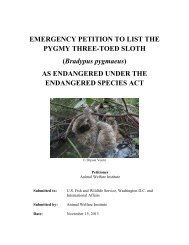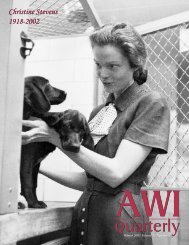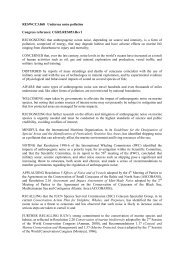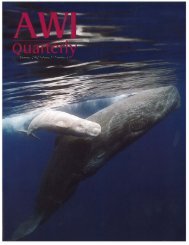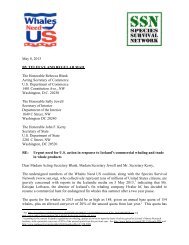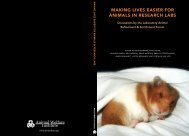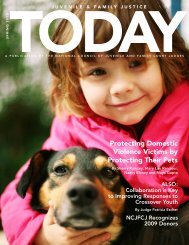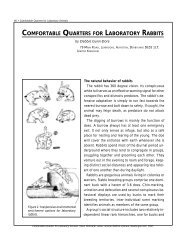A Common Bond - The National Link Coalition
A Common Bond - The National Link Coalition
A Common Bond - The National Link Coalition
- No tags were found...
You also want an ePaper? Increase the reach of your titles
YUMPU automatically turns print PDFs into web optimized ePapers that Google loves.
Chapter 3:Employ Animal-Focused Interventions for Child Victims, Children Who Abuse, and At-Risk ChildrenGuideline 7Use animal-assisted therapies in child abuse andneglect prevention and intervention activities.Using animals as assistants in therapeutic activities has gained attention inrecent years, giving rise to a new field, with recognized standards, research,and professional development. Typically, animals can act as therapeutic agentsin two ways: either in animal-assisted activities (AAA) or in the more formalsettings of animal-assisted therapy (AAT) (Fine, 2006).AAA are a way to provide happiness and relief to others through sharing one’scompanion animal. AAA involve a human volunteer and his or her companionanimal—typically, but not always, a dog. <strong>The</strong> pair completes a training programto prepare for making periodic visits to people in a variety of settings—childadvocacy centers to help children testify in court, nursing homes, schoolsfor physically and emotionally challenged children, programs for children ofdomestic violence victims, psychiatric facilities, and others (Justice, 2007).AAA are a novel and effective approach, engaging pets to support childrenthrough the forensic interviewing process, testifying, and other court-relatedprocedures. <strong>The</strong> title of an article appearing in the ABA Journal says it all: “AtThis Prosecutor’s Office, A Furry Soft Spot for Kids” (Davis, 2007). This personalaccount of one prosecutor’s experience describes the benefits of a pet’spresence for children going through a legal process.AAT is similar to AAA, but it implies a greater level of involvement and skill.Rather than periodic visits, the visits are planned on a schedule tied to specificgoals. <strong>The</strong> goals for the intervention are developed by an occupational therapist,physical therapist, physician, social worker, or other health care professional,and the therapy is then evaluated against those goals for effectiveness.Through AAT, animals provide therapeutic value to abused and neglectedchildren, such as those at the Casa Pacifica Center in Camarillo, California,where Archie, a very calm 165-pound Newfoundland offers a reassuring,non-threatening presence to them (Engel, 2007). Similar programs are offeredelsewhere, such as the Midland Rape Crisis and Children’s Advocacy Centerin Midland, Texas, and <strong>The</strong> Hands-in-Paw program in Birmingham, Alabama,where AAT programs assist children who have been victims of abuse (Phillips,2004).In addition to institutional settings like those, AAT takes place in privateconsulting rooms, public and nonprofit agencies, and other individual, smallgroup settings. A growing number of therapists in private practice use theircompanion animals as therapy assistants. Animals help promote a feeling24



